New formats, flavours and lower-sugar recipes mean there’s a lot for c-store retailers to cram into the soft drinks chiller this summer
Are you ready for the summer soft drinks rush? If early weather forecasts are anything to go by, it could well be a bumper season for barbecue products, ice cream and soft drink sales.
Even if it’s a washout, that won’t stop thirsty shoppers heading in-store for instant refreshment. According to Britvic’s Soft Drinks Review 2016: Convenience, buying a soft drink is the third most popular reason consumers visit a c-store, whatever the weather.
That puts the category just behind key sector buys such as milk and tobacco, and helps explain why Red Bull reckons the market will top £8bn by 2020 (a figure based on projections from Mintel, Canadean and Euromonitor).
It’s an impressive figure, yet it doesn’t necessarily mean huge growth across the board. The same Red Bull-sourced statistics suggest that 97% of future growth will be shared by just three central categories: sports & energy; water; and cola.
On the shopfloor, Sam Coldbeck, from Wharfedale Convenience Store in Hull, has definitely seen how the energy part of that equation has driven sales.
“Soft drinks is certainly a bread-and-butter category for us, and energy drinks are a really big part of that,” she says.
“I’d say, without any exaggeration at all, that they make up about 60% of our soft drink sales.”
For her, the key energy drink buyers are the local blue collar work-force looking for a powerful hit of caffeine.
“We’re in a factory area and there’s lots of builders around, so they come in and get a can to help keep them going through the day. That’s our core market,” Sam explains.
“Of course, with energy drinks, because we’re a responsible retailer, we won’t sell to anyone under 14 years old – that’s our benchmark.”
Richard Dance, of Co-op Welcome Marchwood in Southampton, says Monster is the top selling energy drink in his store, followed by the budget own-brand drinks which sell at three for £1.
“Our shoppers seem to be moving away from the more expensive brands, in favour of the value drinks. But the volume of sales is definitely increasing as people are buying these more and more frequently.
“It’s odd because people are becoming more aware of health and ingredients in food and drink, but they are still wanting to get their energy hit from these drinks.”
Steph Latham, manager at Lostock Hall Spar in Preston, maintains that sales of energy drinks “have picked right up” over the past couple of years.
She’s seen great results from both Monster and the Spar label Blue Bear’s 250ml cans, with the latter on a ‘two for a pound’ deal, which helps them regularly make her top-five sellers in the category.
Steph says that her main energy drinks demographic is skewed towards the slightly younger end of the adult market. This chimes with the wider soft drinks category. According to Britvic’s Soft Drinks Review 2016: Convenience, two out of five 16- to 24-year-olds buy a soft drink when they venture into a c-store.
“Energy drinks are definitely younger people’s drinks” she says. “I’m not sure why they presume younger people need more energy from a drink, but it’s definitely popular with 16- to 20-year olds where we are.
“What we find is that after they’ve had a big night out they’ll come in and straight away head for a Monster or a Lucozade Energy, something to give them a bit of a pick-me-up for the day.”
Ironically, although energy drinks are proving enduringly popular in c-stores, the category itself might need a boost to get through its own upcoming rough patch.
C-store exclusives from Lucozade Energy
Everybody loves an exclusive, and this year Lucozade Ribena Suntory is stepping up to the plate for impulse with two new c-store-only Lucozade Energy flavours.
New blackcurrant bliss and pineapple punch are both available in £1 PMPs.
“Both are exclusive to convenience and they’re low-sugar, so will be below the Sugar Levy,” says Mark Sterratt, head of marketing at Lucozade Ribena Suntory.
“They’re both performing really well, and as they’re an exclusive they won’t be appearing in Tesco or Sainsbury’s, which is absolutely key for us.”
Sterratt says that providing secondary sitings for soft drinks (especially on super-hot days when demand is high) is a brilliant way to maximise sales in the category.
Plus, POS material is important, too, which is why the brand has created barkers, wobblers and counter-top units to disrupt shoppers’ journeys and drive extra purchases.
“When you’re looking at soft drinks, it’s vital to make sure that the top-sellers are visible and available,” he continues.
“We’re lucky from our perspective that Lucozade Energy, Lucozade Sport and Ribena all feature in the top 10 soft drinks brands.
“You know they’re great sellers, so getting the range right is really important.”
Next April the sugar levy on soft drinks comes into force – which means drinks with 5-8g of sugar per 100ml will be taxed at 18p per litre, and those with more than 8g will be taxed at 24p a litre.
In preparation, category hot-shots such as Monster and Red Bull now offer sugar-free and reduced- sugar variants to stimulate shoppers while missing the tax. So far, products such as these are already selling well at Sam’s store.
“We’re giving a good choice on the sugar-free versions and running the sugar-free products alongside the full fat ones,” she explains.
“I think there might be a point where customers who’ve been relying on energy drinks take a look and see how much sugar is in them.
“People are getting heavier and the nation is in a bit of a crisis obesity-wise. I’m not for legislation personally, but the responsible retailer side of me is kind of saying that if we offer an alternative, and we’re not forcing people just to buy sugar-free, then I’m happy with that.
“Hopefully, the education side [of the sugar levy] will be built on when they start taxing the drinks and money will go into shopper education.”
Purely on a practical level, stocking two variants of each line takes up valuable chiller space. And with a growing range of soft drinks to choose from, and apparently endless variations, it can be tough to decide what’s going to earn its place in-store.
For Steph, stocking a selection of the biggest brands is a no-brainer. She says it helps both signpost the category and reassure shoppers that they’ll find what they’re looking for.
“If you think about it, in summer soft drinks are a massive part of our business,” she says. “More than 6% of our total sales at the moment are soft drinks, and that will build as the weather gets hotter. That’s much more than many of our smaller sections.
“Products such as Coca-Cola sell themselves, basically. They’re branded, they’re there – and people just want that brand.”
Energy rush
“The energy sector, in a relatively short period, has expanded from being the new kid on the block to a driving force within soft drinks,” says Gavin Lissimore, head of category marketing at Red Bull UK.
Red Bull was first launched back in 1987 and since it first hit UK shelves the energy drinks market has had time to mature and become a core c-store category.
Despite the sector’s expansion, Lissimore believes that core skus are still king in the chiller – with diet and different-sized formats driving the growth.
“Within energy, core skus account for 50% of the market,” he says.
“Diet and sizes are driving the growth (up 60.4% and 14.7% respectively).”
Research shows that these different sizes attract different sorts of energy-seeking shoppers. Lissimore adds that while Red Bull Original 250ml caters for 18- to 35-year-old professionals, Red Bull Original 355ml attracts an older, more male consumer, and Red Bull Original 473ml has a younger, less affluent and predominantly male fan-base.
Meanwhile, challenger brands are finding fresh ways to compete with the market leaders. Adrian Troy, marketing director for AG Barr, says that the brand’s Rockstar range has found a niche as a “better tasting” energy drink.
“Rockstar’s range of 11 flavours is the biggest in the energy drinks category and is a key motivator for shoppers as it doesn’t define how an energy drink should taste,” he says.
To sweeten the deal further, Rockstar is available in 99p PMPs, driving sales for shoppers who want maximum buzz for minimum cash.
Research shows that stocking branded products makes plenty of sense when capturing soft drinks customers. Put simply, if you stock exactly what customers want then fans of the soft drinks category tend to be loyal.
According to HIM Research & Consulting, people on a soft drinks impulse mission come in-store on average 9.8 times a month. That monthly spend equates to about £19.36 a month, or £232.37 a year – a serious boost for any store’s bottom line.
Jonathan Summerley, purchasing director at Hancocks, says that as a general rule, it is always best to cross-merchandise soft drinks with other products as this can “vastly increase” impulse purchases and creates more interesting and engaging displays, as well as making the shopping experience easier and more effective.
Richard ensures to keep all his soft drinks in his Co-op Welcome store within the meal deal, even Red Bull, as he says it is important to keep the deal simple for customers to understand which items they can choose.
Retailers are also advised to ensure fixtures are located in high-footfall areas and are regularly changed to update the store’s image, as this should keep it looking “fresh and enticing”.
Summerley adds that retailers can improve incremental sales by placing products around the store and away from the main fixture, for example on gondola ends, because this encourages customers to walk down aisles.
“Retailers should ensure displays are changed to suit seasonality and should use the opportunity to communicate to their customers exactly what they are planning to sell and when.”
Another tip is to keep products looking balanced, as consumers tend to take notice of evenly displayed items.
Summerley explains: “It is good practice to work in groups of three instead of just displaying one item. Create a focal point that draws consumers to the display, and then keep their attention by catering for as many senses as possible. Tastings are great way to engage customers and measure the popularity of products.”
His final tip to increase sales is by investing in strong POS material and signage and, if applicable, exploit national TV advertising through supporting new product development in the category.
Making the most of the soft drink category’s summer peak-time means a bit of forward planning. Sam says that in April she makes sure that an extra metre of chiller space is freed up to prepare for soft drinks demand – giving the category four metres in total.
However, even with extra space to play with, she thinks very hard about what gets stocked in her store.
“We’re careful with our soft drinks range – we don’t do anything that drags its feet,” she says.
“Really, it has to be a fast seller to get any space in the chilled area. With new products we tend to take something on and give them a good three months on the shelf, because it takes customers a while to buy into some products.
“But at this time of the year with soft drinks if it’s there on the shelf for a week and we’re not selling it then we’ve seriously got to start thinking about pulling it!”
Bottled water is the fastest growing segment within the £7.5bn soft drinks category (plain water is up +10.6% in volume and +10.3% in value, IRI SIG All Scan Snack Outlets, 52 w/e 28 January 2017). The majority of this growth, 65%, comes from shoppers switching from other soft drinks, notably colas, flavoured carbonates and juices which has been driven to a large extent by consumers’ concern about sugar, according to Nestlé.
For summer 2017 Sam has built up a selection of “decent sugar-free drinks”, plus a lot of flavoured waters which seem to be on-trend for her customers. She’s also been experimenting with new flavours of existing variants, such as Pepsi Max Ginger.
So far Sam has had a lot of success with Volvic Juice, which is being boosted by an on-going promotion. Also, six-packs of still water have done well, exceeding her expectations.
“We’ve always been a bit of a convenience ‘pick it up and consume it straight away’ type of shop,” she says. “We’d never really bothered with the six-packs of water, but we trialled them this summer and they’ve surprised us. If customers are going to the seaside it’s a lot easier to take a six-pack, and cheaper than buying the drinks when you get there – especially if you’ve got a family of four,” she explains.
Water is always a good seller in the sun, but one of the unintended consequences of the sugar levy could be a boost in bottled water sales over the next couple of years whatever the weather, says Carol Saunders, head of customer marketing at Highland Spring Group.
“The nation’s focus on health, particularly sugar, is having a big impact on the soft drinks category as an increasing number of consumers are switching from sugary soft drinks to healthier alternatives,” she says.
“Being the only soft drink on the shelf that contains no sugar or artificial sweeteners, bottled water is benefitting from the trend.”
Silika Shellie, head of category and shopper development at Nestlé Waters UK, adds that bottled water currently represents 18% of total soft drinks sales in convenience.
“The volume of bottled water sold through the convenience channel has increased year on year, with 32% of the category value sales going through convenience and impulse,” she says.
Coca-Cola deal targets thrill-seekers
Coca-Cola European Partners (CCEP) is launching a new Merlin Entertainments Group on-pack promotion across its flavoured carbonates range to help boost retailers’ summer sales.
The promotion will run between now and 19 October across 330ml cans and six- and eight-can multipacks of Fanta, Sprite and Dr Pepper classic and zero variants. It offers consumers a £25 discount on full-price tickets and a one ride Fast Track pass to Alton Towers or Thorpe Park, representing Merlin Entertainments Group’s best-ever value on-pack discount.
To claim the offer, consumers will need to visit a landing page via www.fanta.co.uk/Merlin, www.sprite.com/Merlin or www.drpepper.co.uk/Merlin and select their attraction and tickets, before entering their unique code found on-pack.
The summer activation will be supported by a full social media campaign and online partnership. As part of this, Fanta will be offering additional chance to win VIP prizes.
CCEP is looking to build on the growth enjoyed by the flavoured carbonates sector, which is now worth £671.4m, up 1.7% (AC Nielsen MAT Total GB to 25 March 2017), as well as the transformation of Fanta earlier this year.
This development saw a new Fanta Orange recipe and the launch of the brand’s new visual identity and spiral bottle format.
Simon Harrison, operational marketing director GB at CCEP, says: “Flavoured carbonates are proving popular with consumers, and with growth across both instant and future consumption formats, we’ve invested in our leading carbonate brands to help retailers increase their sales across the summer months.
“By offering the promotion across a range of flavours and classic and zero-sugar variants, we’re helping retailers appeal to all shopper preferences, and we expect this offer to be a big hit with young adults who are looking for a fun filled day out over the summer.”
Out of the ordinary
For such a big overall category, experimenting with new lines can throw up some unexpected best-sellers. It can also help differentiate your offer from other c-stores’, as Peter Lamb from Lamb’s Larder in East Sussex, explains. “We have all the usual suspects in here like your Cokes and your Sprites, and they do really well. That’s really the heart of the category wherever you are,” he says.
“But we also do the American Fanta, which does really well even though it’s more expensive. It’s not something you can buy every-where, which is why people like it. There’s also a cola called Juicy Fuel Cola, which comes in an energy-drink-style can, and is made of totally natural products – it’s really refreshing.”
Another interesting pick from Peter’s selection is Bundaberg, a premium drink made in Australia, which Peter says he sells ‘cupboard-fulls’ of – especially to women looking for something non-alcoholic.
“Cold-pressed local apple juice is another big seller for us,” he says. “We’ve got a producer who’s about five or six miles from here. We sell both small bottles and the large litre bottles, too. And I reckon we sell about 20 to 25 bottles a week, which is great.
“At £3 a bottle, it’s a premium product, but people really enjoy the local appeal of it. It tastes nothing like the commercial apple juice on the market.”
One of the biggest attractions of the soft drinks category for retailers is how it can help build shoppers’ baskets. The logic goes that if customers are coming in for a can or carton to take away, they’re probably going to buy some accompanying food, too.
Adults turn to sophisticated soft drinks
As good c-store retailers will already understand, soft drinks aren’t just for kids anymore.
According to the Office for National Statistics, the proportion of adults in the UK who drink alcohol is at its lowest level on record.
That means there’s plenty of scope for stocking some sophisticated, adult-oriented alcohol-free choices.
To help meet this market, Shloer has re-formulated its portfolio with a higher juice content and created snazzy new pack designs.
“With shoppers purchasing adult soft drinks more frequently – particularly in convenience stores where the average frequency of purchase rose by 12% last year (and the increase in the purchasing frequency for Shloer was almost double that at 23%) – we could see the potential to unlock future category growth,” explains SHS Drinks marketing director Jo Sykes.
“Summer is a key sales period for Shloer in impulse stores – for example, on last year’s heatwave days when the temperature soared to 25˚C or above, Shloer sales through impulse stores soared by 46%.”
Meanwhile, health continues to be a key driver in chiller choices for kids and adults alike, as Trystan Farnworth, commercial director at Britvic, maintains. “Health will undoubtedly be a major trend for this year and beyond and we believe this, coupled with the growing demand for immediate refreshment, will be key to unlocking future sales growth for retailers,” he says.
HIM reports that most soft drink shoppers are on a food-to-go mission, with the secondary items in their baskets most likely to be crisps and snacks (23%) or confectionery (18%).
“It’s a real cross-section of people that come in,” says Peter.
“During the ‘feeding frenzy’ period at lunchtime it doesn’t tend to be big baskets – people just take two or three items with a drink away in their hands. It’s later in the day that you get people coming in and filling up their baskets and taking their time a bit more.”
Neal Kelly, fresh foods director at Hendersons Group, also makes the link between food to go and soft drinks. Plus, he believes the emergence of healthier drinks choices goes hand-in-hand with better food-to-go selections in-store.
“It’s interesting to look at,” he points out.
“You could say that in convenience carbonates are where it’s at. It’s a very mature category, and carbonates bring in lots of accompanying food purchases.
“Basically, in a convenience store you’re always going to be able to sell a snack and a bottle of pop as a to-go treat that people can consume straight away.
“But I think as the selection of in-store food gets healthier there are opportunities in perceived healthier drinks – be that water, a natural fruit juice or a smoothie. That’s the big emerging category for me.”
With that in mind, he recommends segmenting the category into those healthier choices and treat purchases.
Drinks that are perceived to be healthier can help signpost balanced food-to-go ranges, too – and help make your store more appealing to health-conscious consumers.
So, whether you invest in premium apple juice made just down the road, or globally popular price-marked energy drinks, there’s some big decisions to be made.
But at least once you’ve made your choice, it’s a relatively easy category to keep on top of. The only real challenges are staying ahead of current trends, and ensuring you have enough cold stock to keep those summer holiday shoppers hydrated throughout the season.
“When it’s hot outside the two things you’ve got to focus on are keeping soft drinks stocked up and keeping them chilled,” says Sam.
“And, to be honest, if that’s the only battle you have on your hands, then it’s not a bad place to be!”
L’eau and behold
As the sugar levy prepares to bite brands are looking for creative ways to position their products as healthier choices. For supplier Nichols that’s meant entering the burgeoning flavoured water category with its cleverly-named new product, Vim20.
“Bottled water has tipped into the billion pound value sales category for the first time,” says Ed Jones, senior customer marketing manager at Nichols.
“Vim20 triggers the emotions around water. People’s minds are blown when they realise it’s a spring water variant that tastes just like Vimto, despite being transparent.
“It’s really clever how they’ve achieved it, and because it’s got no added sugar it ticks a box for shoppers.”
Elsewhere in the portfolio Nichols is innovating with its Feel Good Infusions brand – naturally infused waters for health-conscious consumers looking for convenience.
“Infusions is a big trend, and I think it’s going to be played out in a lot of different places,” he says.
“This is the first branded mainstream offer into this marketplace. A key impulse line is the strawberry & mint variant, which doesn’t give that ‘sweet hit’ you might get from other flavoured waters.”




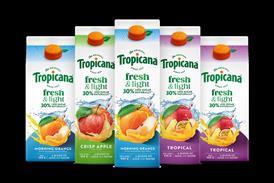
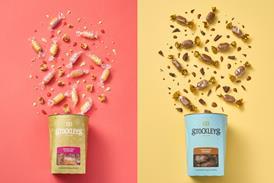


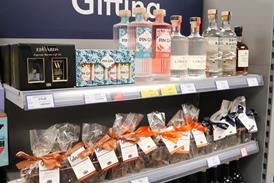
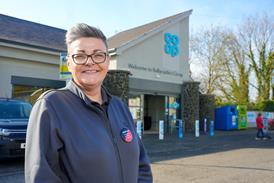
![WG-4003[58]](https://d2dyh47stel7w4.cloudfront.net/Pictures/274x183/4/5/1/353451_wg400358_6083.jpg)

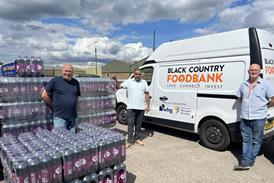





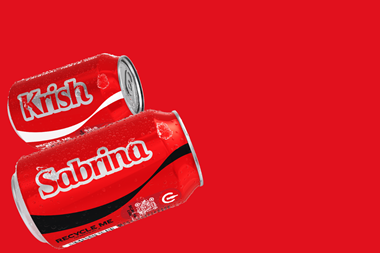
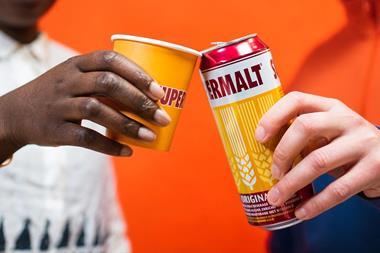
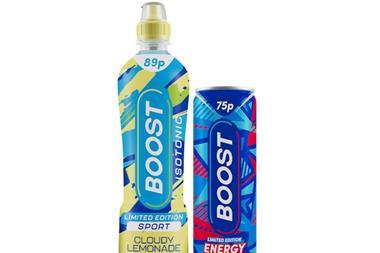
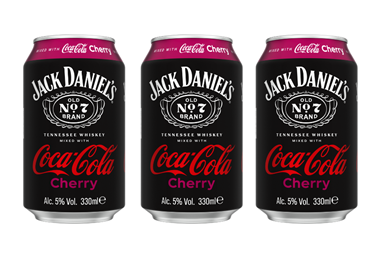
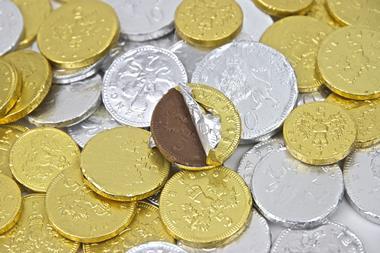
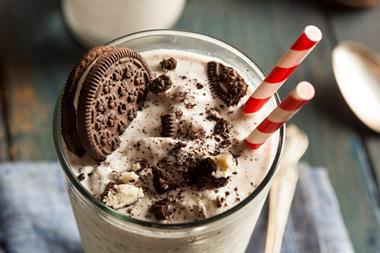

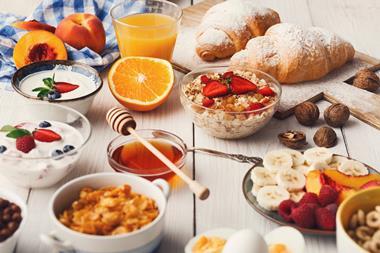
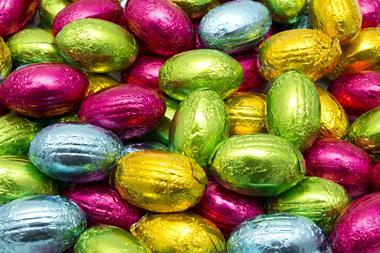
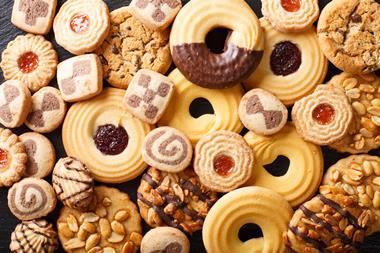
No comments yet